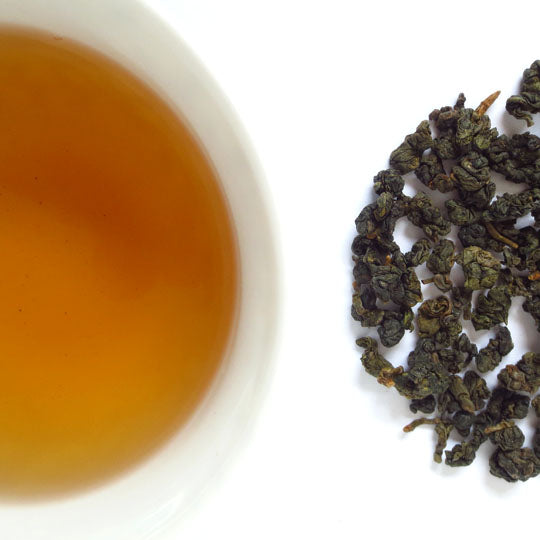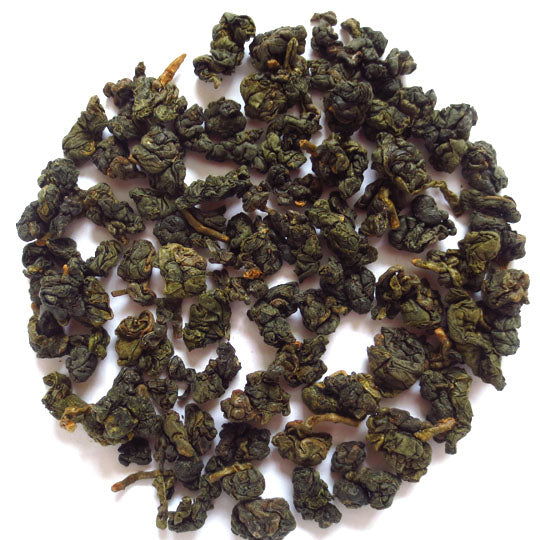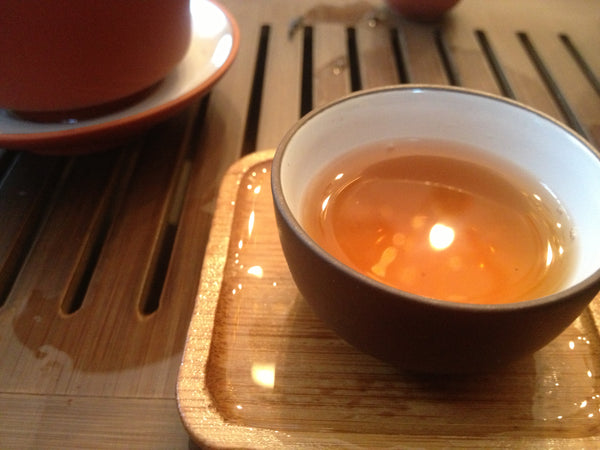
What is Hung Shui Oolong?
A new category of oolong in our "A Tea Master's Oolong" series is called Hung Shui (also written Hong Shui). This category belongs to the fascinating - and for newcomers often times, bewildering - world of Taiwanese oolongs. (Read here about the background to A Tea Master's Oolong.)
Hung Shui is used to describe a certain style of making oolong. Unlike many classical teas, Hung Shui is not particular to a provenance. But in some ways Hung Shui's raison d'etre has to do with the protection of another famous Taiwanese oolong that is tied to its provenance, the Dong Ding oolong.

So before we can go into Hung Shui it will be helpful to know what a Dong Ding oolong is. Dong Ding oolong is an oolong that comes from the mountain of Dong Ding (also written Tung Ting), around 700 meters high, located in central Taiwan. The tea plants here are claimed to be transplants from the Wuyi mountains of China, home to some legendary oolongs including the Dan Hang Pao.
Dong Ding oolongs typically have mid-level oxidation and roasting. However, it is hard point out the exact percentage of either oxidation or roasting. Our tea master from Taiwan, tells us there are no precise standards. "The oxidation can be low to medium (but higher than that of high mountain oolong) and the roasting is medium to high (but not too high otherwise the freshness of the leaves will be destroyed)."
Dong Ding oolongs became very popular in the 1980s. The result was that tea farmers from the neighboring regions began to copy the style of making Dong Ding.(Reminds me of a time when "Darjeeling type" teas were being manufactured outside of India). For the purists it was an issue when oolongs manufactured outside the Dong Ding mountain began to pass off as Dong Ding oolongs. As a product, "provenance" is of importance for tea (Darjeeling eventually had to secure protection under Geographical Indicator mark).

Surprisingly, Taiwan tea institutions seem to have a hand in causing the dilution of Dong Ding provenance. Twice every year the much anticipated Dong Ding tea competition takes place. It is the world's largest such competition where nearly 6000 "Dong Ding oolongs" are entered to be judged and ranked. Entries are made from outside of Dong Ding mountain as well. After approximately 1/3 is rejected from the competition, the rest can be sold in the market as Dong Ding regardless of where it comes from.
It was under these circumstances that the term Hung Shui was devised. All oolongs that are not from the Dong Ding mountain, but are made in Dong Ding style and who win a place at the competition, are now referred to as Hung Shui. So while all Dong Dings are Hung Shui technically, in terms of the manufacturing process, not all Hung Shui are Dong Dings. I hope this is not confusing.
Our Hung Shui comes from Yiguang Shan. Selected by our local tea master, it is well roasted and has been aged well. Like all good Hung Shui, it has both fruity and floral characters. Some describe Hung Shui as a “marriage between the styles of Anxi Tei Guan Yin (light oxidation with roasting from light to heavy) and Wuyi Yen Cha (high oxidation, roasting varying from light to heavy).” Tei Guan Yin and Wuyi Yen Cha are famous oolongs from Fujian Province, China.
Hung Shui calls for tremendous skills on the part of the tea maker. Please note that Hung Shui from other places besides Dong Ding mountain are not in anyway inferior to the traditional Dong Ding. In fact it is not uncommon for a high mountain Hung Shui not from Dong Ding to win the first prize at the Dong Ding oolong competition!


